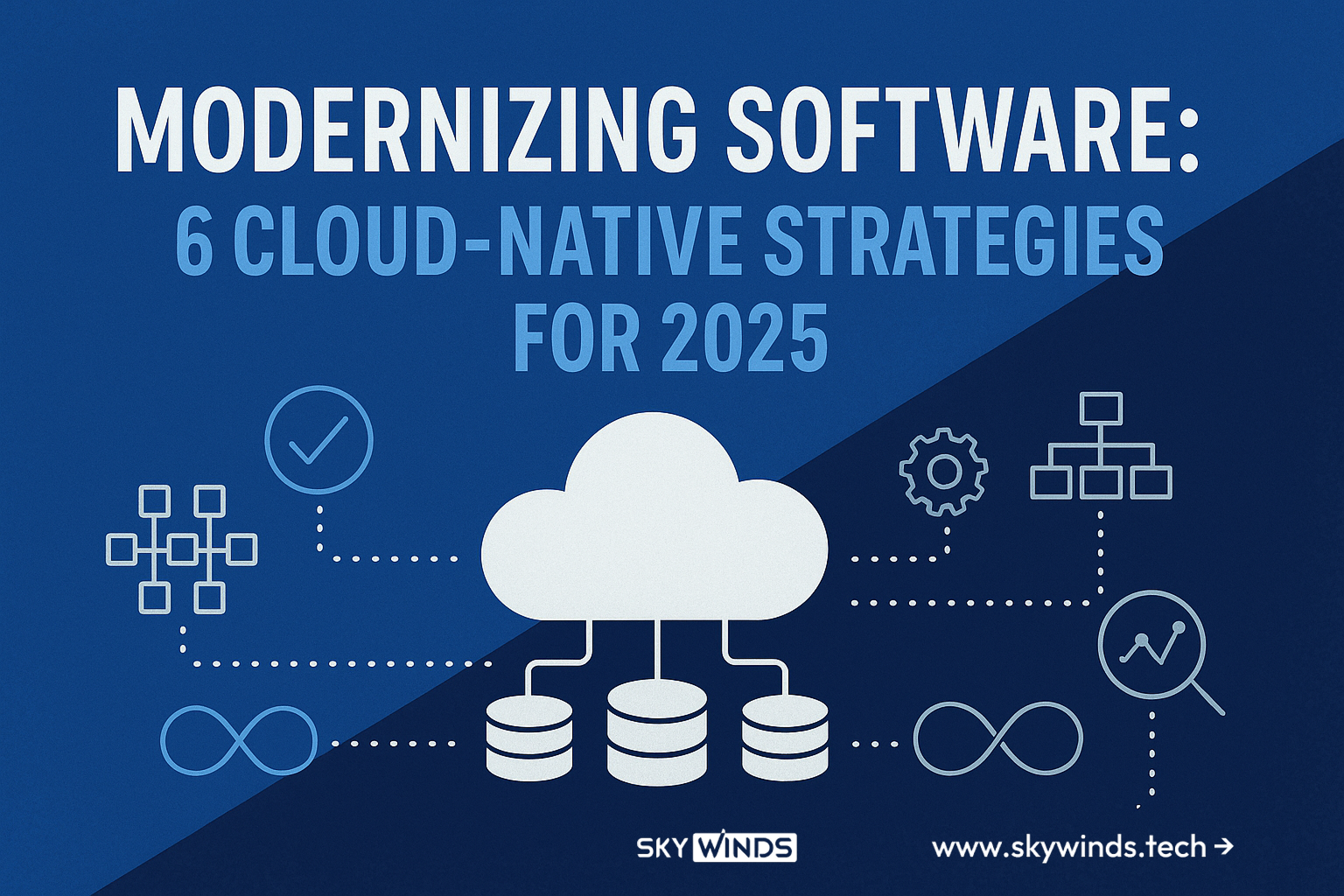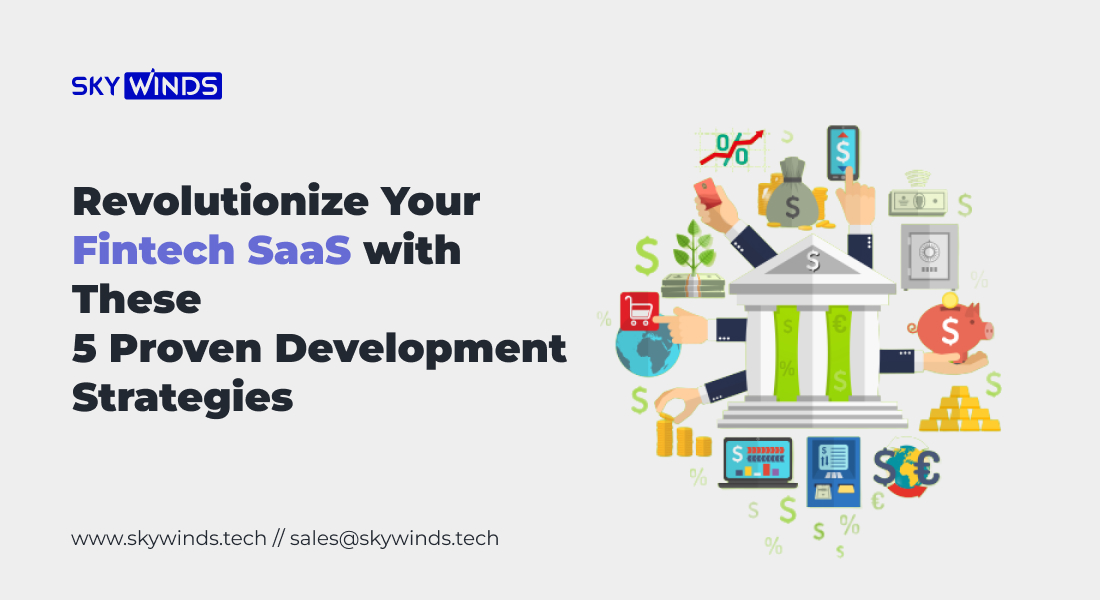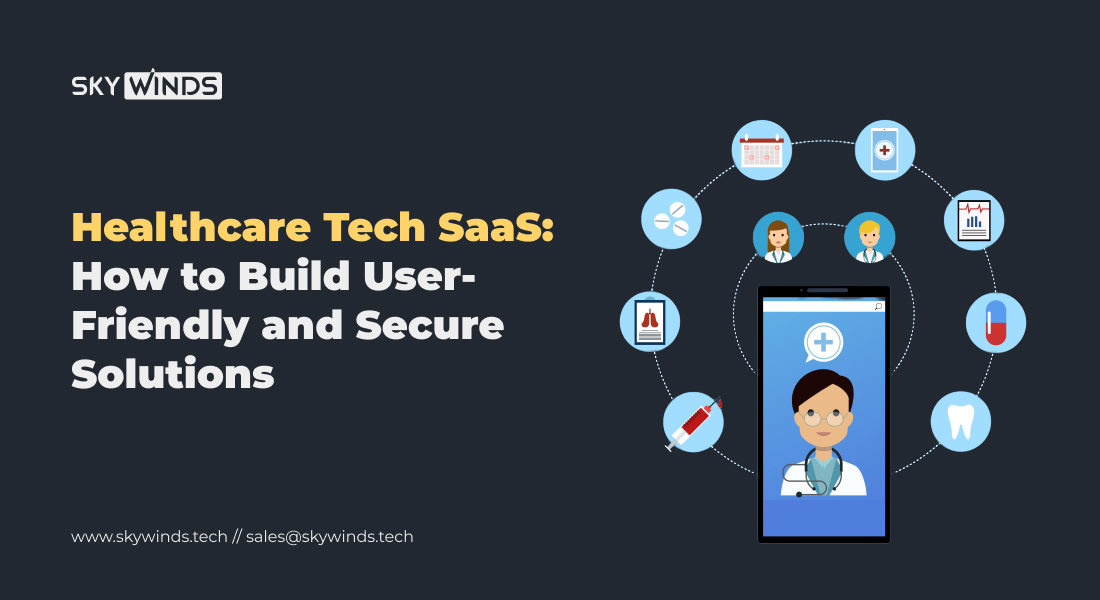Table of Contents
- Introduction
- 1. Assess the True Cost of Legacy Infrastructure
- 2. Re-Architect with Microservices, Not Just Recode
- 3. Adopt DevOps + CI/CD for Faster Releases
- 4. Use Cloud-Native Databases and Serverless Architectures
- 5. Bake in Observability, Not Just Monitoring
- 6. Don’t Migrate Blindly—Modernize with a Roadmap
- FAQs
- 1. What is cloud-native software development?
- 2. How do microservices improve agility in software development?
- 3. Why is observability important in cloud-native systems?
- 4. What’s the difference between serverless and traditional cloud hosting?
- 5. How do I start modernizing legacy software for the cloud?
Introduction
Legacy software might still run—but it’s costing you more than you think. From bloated maintenance budgets to slow deployment cycles, old infrastructure is a silent blocker to growth. In 2025, companies that succeed aren’t just in the cloud—they’re fully embracing cloud-native software development to move faster, scale smarter, and innovate continuously.
But going cloud-native isn’t a lift-and-shift operation. It’s a strategic transformation involving architecture, automation, and visibility. Whether you’re dealing with a stubborn monolith or a fragile pipeline, these six strategies will help you modernize the right way—cutting costs and boosting agility across your stack.
1. Assess the True Cost of Legacy Infrastructure
Most companies know their legacy systems are slow—but few realize just how expensive they are.
It’s not just about outdated code. It’s the silent drain: rising infrastructure bills, emergency maintenance, sluggish releases, and overworked dev teams stuck fixing instead of innovating. Worse yet, every delay in product rollout or customer feature is a missed opportunity.
Legacy systems carry a hidden tax:
- Integration friction: Legacy tech doesn’t play well with modern APIs or platforms.
- Downtime risk: Older systems often have brittle dependencies and single points of failure.
- Talent gap: Fewer developers want to work on aging tech stacks like VB6 or COBOL.
- Scalability ceiling: Monoliths hit a wall as user demands spike.
According to Forrester, maintaining legacy software consumes over 70% of IT budgets in some enterprises. And that’s before you calculate the lost market speed.
Modernizing software—especially with cloud-native approaches—starts with brutal honesty. Run a cost-benefit analysis. Score systems by stability, criticality, and refactor effort. And always ask: What’s the ROI of keeping this alive another year?
2. Re-Architect with Microservices, Not Just Recode
Modernization isn’t just about rewriting old code in a new language. It’s about re-architecting for flexibility, speed, and scale.
One of the biggest mistakes companies make is a “lift and shift” cloud migration—taking a monolith and moving it to AWS or Azure without changing how it works. It’s still the same bottleneck, just hosted elsewhere.
Microservices offer a smarter path. By breaking software into modular services that communicate via APIs, you unlock:
- Faster feature delivery (teams work independently)
- Scalability by service, not the whole app
- Resilience—failures in one service don’t crash the whole system
For example, separating your payment processor, authentication, and notification services means updates or scaling happen in isolation—not across the entire codebase.
You don’t have to do it all at once. Proven strategies like the Strangler Fig pattern allow gradual migration: you wrap legacy systems and replace modules over time. Domain-driven design also helps identify logical service boundaries.
Yes, there’s complexity: you’ll need orchestration, service discovery, and better observability. But the payoff is agility—and agility is the new currency in software.
3. Adopt DevOps + CI/CD for Faster Releases
Modern software teams don’t just ship code—they ship continuously.
DevOps is more than a buzzword; it’s a cultural and technical shift that breaks down silos between developers and operations. Add CI/CD pipelines to the mix, and you get a powerful engine that pushes updates faster, with fewer errors and more confidence.
What does this look like in practice?
- Code is committed → tests run automatically → successful builds are deployed
- Small changes ship daily or even hourly, not quarterly
- Rollbacks and hotfixes happen in minutes, not days
This speed isn’t reckless—it’s controlled. CI/CD tools like GitHub Actions and Azure DevOps help automate testing, integration, and delivery. Paired with feature flags, blue-green deployments, or canary releases, teams can move quickly without fear.
According to DORA’s State of DevOps report, high-performing teams:
- Deploy 46x more frequently
- Recover from incidents 96x faster
- Have 5x lower change failure rates
DevOps isn’t a one-size-fits-all solution. But if you want agility at scale, a tight CI/CD loop is essential.
4. Use Cloud-Native Databases and Serverless Architectures
Infrastructure should scale with demand—not stand in your way.
In 2025, high-performing teams are leaning into cloud-native components like serverless compute and scalable databases. Why? Because they eliminate the operational burden of managing servers, clusters, and storage volumes.
Serverless: Less Ops, More Code
With platforms like AWS Lambda, Azure Functions, and Google Cloud Functions, you only pay when your code runs. No idle time, no provisioning. It’s ideal for:
- Background tasks and cron jobs
- API endpoints
- Event-driven workflows
Serverless boosts agility and cuts costs, especially for unpredictable workloads. But it’s not a silver bullet—cold starts, timeout limits, and state management require thoughtful design.
Cloud-Native Databases: Built for Scale
Databases like DynamoDB, CockroachDB, CosmosDB, and Aurora are designed for:
- Global availability across regions
- Automatic failover and scaling
- Built-in backups and encryption
They support cloud-native features like schema-less data, horizontal scaling, and integrated observability.
Choosing between containers, serverless, or managed PaaS depends on your team’s needs. But one thing is clear: if you’re still manually provisioning VMs and managing database failover scripts, you’re already behind.
5. Bake in Observability, Not Just Monitoring
In a cloud-native world, systems are distributed, dynamic, and constantly changing. Old-school monitoring tools can’t keep up.
Monitoring tells you when something breaks. Observability tells you why.
To truly modernize, you need to build observability into the core of your architecture—not bolt it on after deployment. That means collecting:
- Metrics: real-time performance data (CPU, memory, latency)
- Logs: detailed event history
- Traces: end-to-end visibility into requests across services
Together, these three pillars give you context. You don’t just know there’s an error—you see where it started, which microservice caused it, and how long it took to ripple through the system.
Popular tools include:
- Prometheus + Grafana for metrics and visualization
- OpenTelemetry for standardized instrumentation
- Datadog, New Relic, or Honeycomb for full-stack observability
This is especially crucial in systems with dozens (or hundreds) of microservices. Without observability, debugging becomes a black hole.
One smart move? Treat observability as code—defined in your infrastructure, versioned, and deployed with your services.
6. Don’t Migrate Blindly—Modernize with a Roadmap
The biggest modernization failure? Rushing in without a plan.
Too many teams jump straight into migration—rewriting code, shifting to the cloud—without understanding what they’re modernizing, why, or how success will be measured. The result? Budget overruns, downtime, and frustrated stakeholders.
What you need is a cloud modernization roadmap—a clear sequence of steps aligned to business goals.
Start with an Assessment:
- Inventory all systems, dependencies, and tech debt
- Score each system on complexity, criticality, and cost
- Identify “quick wins” vs. high-risk areas
Phase the Modernization:
- Pilot small services first to prove architecture choices
- Use feature flags, APIs, and adapters to bridge legacy and modern
- Migrate incrementally, not all at once
Align Stakeholders:
- Get buy-in from product, security, ops, and finance early
- Define metrics: velocity, uptime, cost reduction, user satisfaction
- Communicate clearly and consistently during the process
Modernization is a marathon, not a sprint. But with the right roadmap, it becomes a path to faster delivery, happier teams, and scalable growth.
FAQs
1. What is cloud-native software development?
Cloud-native software development is the practice of building applications that run in elastic, scalable cloud environments using modern techniques like microservices, containers, and serverless infrastructure.
2. How do microservices improve agility in software development?
Microservices break large applications into smaller, independent services, allowing teams to develop, deploy, and scale features faster without affecting the entire system.
3. Why is observability important in cloud-native systems?
Observability helps you understand system behavior across services by combining metrics, logs, and traces. It makes debugging easier and improves system reliability.
4. What’s the difference between serverless and traditional cloud hosting?
Serverless only runs code when triggered, with no need to manage servers. Traditional hosting requires provisioning and managing infrastructure, even during idle time.
5. How do I start modernizing legacy software for the cloud?
Start by assessing the current system’s cost and complexity. Then build a phased roadmap that includes refactoring code, introducing CI/CD, and adopting cloud-native tools.




